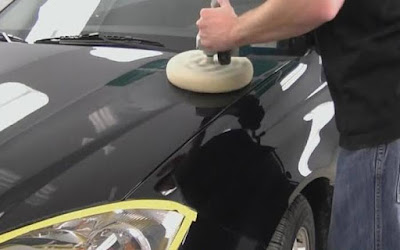Benefits Of Hot Dip Galvanizing
Hot-dip galvanizing is a practice that is 150 years old. It is primarily used to protect steel against corrosion. The process involves the usage of molten zinc that is melted at aggressively high temperatures. Also simply referred to as galvanizing, the method uses zinc as the main component because it is a completely recyclable metal. Hot-dip galvanizing is wherein hardware materials such as fabricated steel, structural steel, fasteners, castings, etc, are dipped in a kettle filled with molten zinc. After the immersion, the contents become coated by a metallurgically bonded alloy that safeguards the steel and gives it anti-corrosion properties. As a result, both engineers and architects count on hot-dip galvanizing to improve the shelf-life of steel materials. In this blog, we will underline the importance and some of the main benefits of hot-dip galvanizing.
What Happens in Hot Dip Galvanizing
Before we list out the benefits, it is necessary to understand how hot-dip galvanizing stands out as a pivotal process across industries. As more and more companies want to maximize the durability and lower the maintenance costs, hot-dip galvanizing has emerged as a favorite alternative. The process involves immersion of metal in molten zinc that is usually heated up to temperatures ranging between 440 and 460ºC. Before the hot-dip, the metals undergo a stringent cleanup process that includes grease removal, pickling, and fluxing (the metal is coated with an adhesive line). Next, the metal is dipped in the hot zinc liquid bath. Hot-dip galvanizing allows for the hard-to-reach corners and welds to be coated evenly.
Benefits
· Hot-dip galvanizing is good news for steel’s lifespan. There is adequate evidence available that highlights the role and ability of hot-dip galvanizing in elongating the quality and performance of steel materials. Steel that has been put through the hot-dip galvanizing can last up to 20 years in marine and industrial environments. In rural settings, the shelf life of galvanized steel can exceed 25 years. What’s more, galvanized steel is not very demanding as far as maintenance is concerned.
· Hot-dip galvanizing does not cost-intensive process. As a result, it is the first choice of architects and engineers. Galvanizing is cheaper as opposed to painting. Unlike other processes, hot-dip galvanizing is not labor-intensive and is a very mechanized and controlled alternative.
· Speaking of costs, with galvanizing another added advantage is that the initial cost is very low. Not to mention the long durability is another factor that makes hot-dip galvanizing affordable and dynamic. As the steel can does require maintenance at regular intervals, the maintenance costs of galvanized steel are next to nil. This attribute is particularly important when steel structures are located in remote areas or venues that are situated in harsh terrains.
· Hot-dip galvanizing is not rocket science. Because the process is straightforward and promises high reliability, it is the first choice in all kinds of steel protection matters. Furthermore, hot-dip galvanizing is beneficial also because it can be easily monitored and regulated. The thickness of the coatings used is defined, specific, and predictable.
· Hot-dip galvanizing is advantageous also because the coating process can be completed within a few hours. Comparatively a painting process can take up to a week to get done.
· The USP of hot-dip galvanizing is that it is very unique. No other coating process can boast of coating metals whilst also metallurgically binding them. This novelty factor gives hot-dip galvanizing an added advantage versus other coating methods. Not to mention, galvanized steel develops higher durability and resistance because of which its usefulness increases manifold in transport, storage, handling, and erection. It must be mentioned that because of the added traits, the shipping of steelworks becomes an easy task.
· As briefly stated earlier, hot-dip galvanizing allows for metals to get coated evenly. Specifically, when steel is immersed in the hot zinc liquid bath, the coating process occurs in the most awkward and difficult corners, narrow spaces, and gaps that are otherwise difficult to coat. As the coating is uniform, it improves the appearance of edges and corners versus thinning them out (it is what happens when a coating is applied using brushes and sprays).
· Hot-dip galvanizing is recommended for steel structures because it promotes ease of construction and inspection respectively. Because galvanizing is such a fool-proof process so if you come across well-coated steel you can be rest assured that it is. If you should require further verification then you can use electronic inspection devices to be doubly sure.
Hot-dip galvanizing has more than just a handful of benefits. It is especially a must-do if the steel is involved. If you have hot-dip galvanizing requirements, feel free to contact us to get a quote!



Comments
Post a Comment